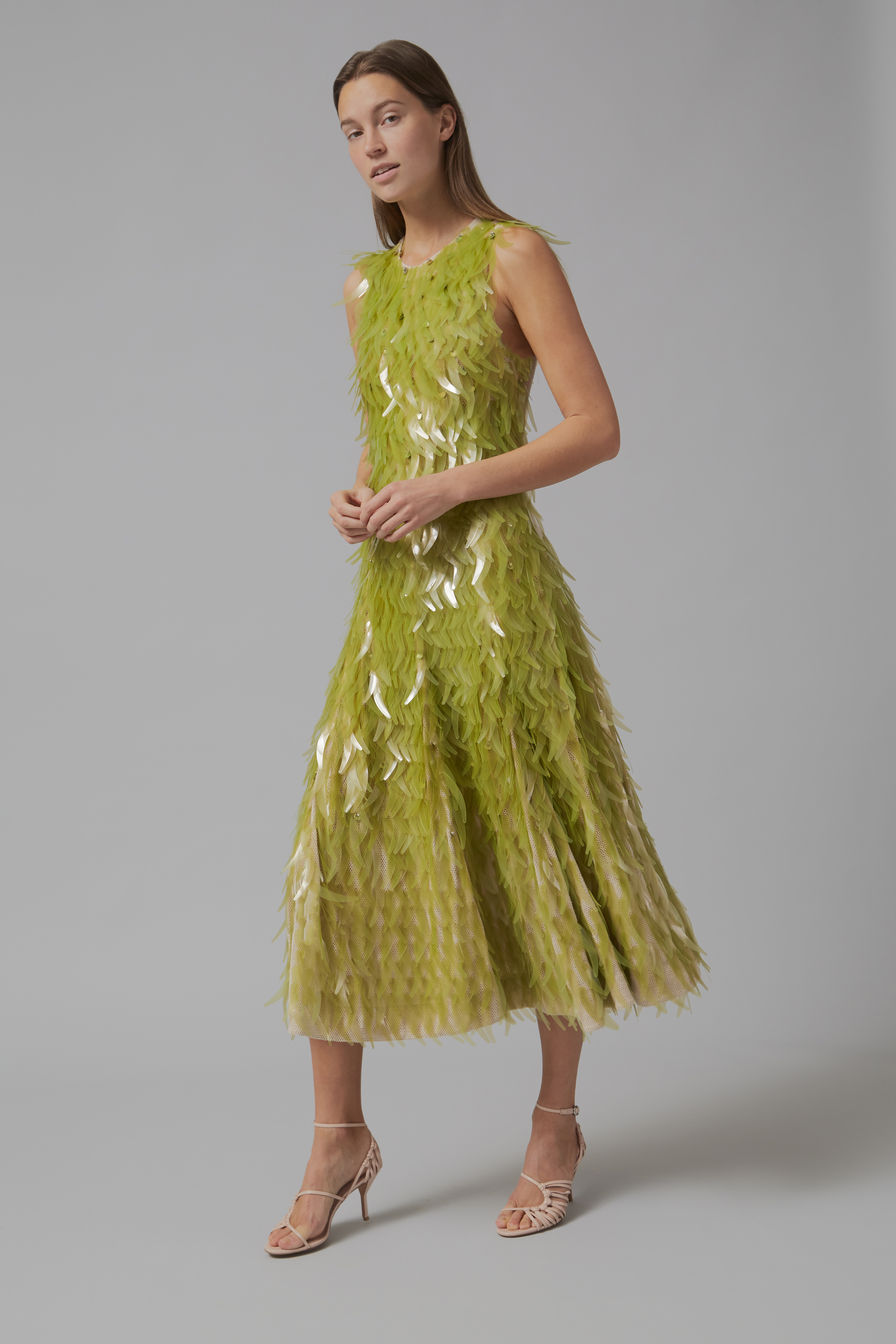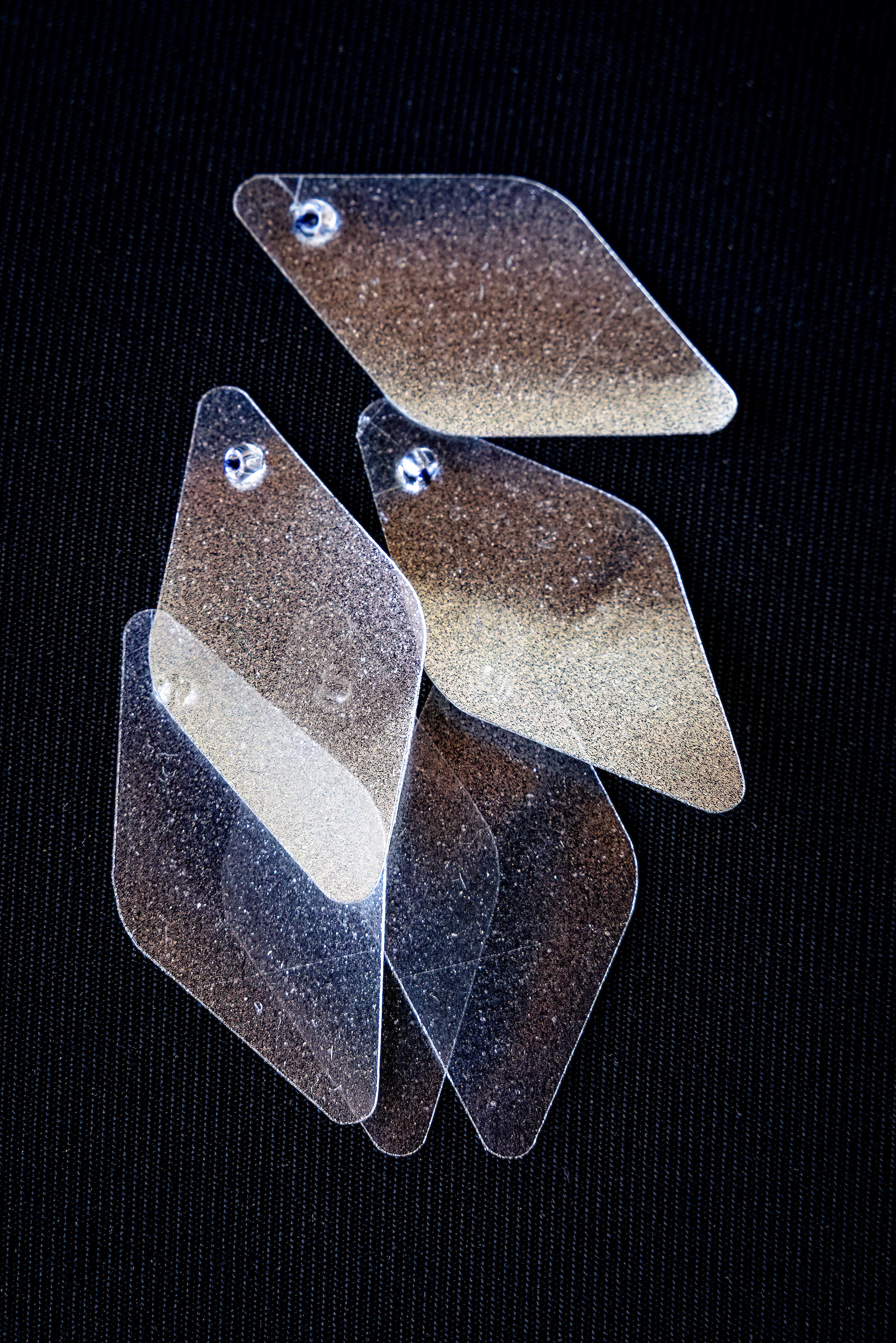Charlotte McCurdy wants to take sustainability to the next level. Instead of just buying less, she wants to create consumer products out of materials that are carbon negative.
McCurdy, an assistant professor of industrial design in The Design School at Arizona State University, works at the intersection of research, design and sustainability. She came to the school in the fall 2022 semester and teaches industrial design and a class titled Design for Ecology and Social Equity.
A few years ago, she created a translucent raincoat made of a carbon-negative, algae-based plastic substitute while she was a graduate student at the Rhode Island School of Design. Called “After Ancient Sunlight,” the work was part of “Nature — The Cooper Hewitt Design Triennial” in 2019, won the Experimental category in the 2019 FastCompany Innovation by Design Awards and was exhibited at the Design Museum in London.
Algae is efficient at converting solar energy to stored chemical potential energy — so it sequesters carbon and is therefore carbon negative instead of carbon neutral. That’s opposed to making plastics biodegradable, which releases their carbon into the atmosphere.
In a video pitch for “After Ancient Sunlight” project, McCurdy said:
“We increasingly have the technology to make new and old materials out of biomass and present-tense sunlight. We have a guilt about consumption. We’ve tried telling each other that the moral thing to do is to reduce our consumption. How’s that going? Making things out of present-tense sunlight could reduce the guilt over consumption. Consumption could be carbon-negative behavior.”
Charlotte McCurdy collaborated with top fashion designer Phillip Lim on this shimmering green dress as part of the ONExONE Conscious Design Initiative, which pairs designers and scientists.
In 2020, she collaborated with top fashion designer Phillip Lim on a shimmering green dress as part of the ONExONE Conscious Design Initiative, which pairs designers and scientists. McCurdy created the sequins, a notorious use of plastic in fashion, out of the algae-based polymer, while Lim designed a base fabric that was ecologically responsible as well as thermoregulatory.
McCurdy has been recognized as a sustainability innovator in a recent commercial for Genesis electric vehicles, which dramatizes her work on the green dress.
She came to design through her work at a sustainability nonprofit.
“We worked with large corporate clients who saw the writing on the wall around crop supply chains, particularly coffee,” she said.
“Coffee, especially high-quality Arabica, grows in a particular elevation band, and as things get hotter, there is not more uphill the plants can go.The majority of Arabica is grown by small farms. Our nonprofit tried to create a path for the future for the farmers that could weave equity and climate resilience together.”
She saw firsthand the power of consumer demand to change the behavior of corporations.
“That really intrigued me and drew me to design. How could I position myself in a place where I’m pushing for a better, more ambitious definition of sustainability in the broader conversation?” she said.
“How do you create tools for having a conversation about something that never existed before?”
In graduate school, she explored industrial production and how the creation of cement, steel and plastic produces emissions.
She investigated whether it was possible to use algae feedstock to make a petrochemical-free plastic substitute.
“Plastics was the place to start if the goal is to ultimately make something accessible and vibrant that can shape the public conversation about climate change. Consumers make decisions about plastics every day,” she said.
“It’s so perniciously everywhere. We’re familiar with plastics as packaging but they’re also in pigments and coatings, and they subtly permeate so much of our life in a big way.
“More than half the textiles produced on earth are from fossil fuels in origin, the biggest of which is polyester.”
She did a lot of experimentation.
“I’m coming from the design side and not the hard science side. My question wasn’t, ‘If I change this variable by this amount, how will the performance change?’” she said.
“My goal was to see if it was possible and to have proof of concept. Is it in the domain of the possible to make a film plastic substance out of algae?”
Charlotte McCurdy creates ‘plastic’ raincoats and sequins from algae polymer. Photo by Charlie Leight/ASU News
She looked to a wide variety of techniques, from molecular gastronomy to glass casting to leather tanning.
“Before the industrial revolution we made everything without fossil fuels. We have a rich body of knowledge of how to make functional, vibrant materials that meet our needs,” she said.
Algae has a naturally occurring biopolymer, and McCurdy developed a process for coaxing the material to perform the way she wanted it to.
She called her process “hundreds of beautiful failures. Each one let me learn something to try the next time.
“And I got to the point where I was able to produce something that was strong enough and consistent enough.”
Why a raincoat?
“It was important to me to make something that comments that this climate-change future is already here in some way. It gestures at extreme weather and hurricanes. Hurricanes are how the present manifestation of climate change is felt day to day in impacted communities,” she said.
For now, the raincoat is not headed to large-scale commercial production.
“With the right partners and circumstances, it definitely could be pushed much farther in terms of commercial readiness,” she said.
“That’s part of why coming to ASU is exciting to me -- understanding the tech transfer piece. The (intellectual property) piece is evolving, and I’m in the early stages of that. I’m learning the process.”
A transluscent raincoat that Charlotte McCurdy made out of an algae-based platic. Photo by Charlie Leight/ASU News
One challenge is that because it’s a naturally occurring biopolymer, the raincoat material is too biodegradable to survive the current mass-production system.
“We have this legacy infrastructure that’s built up around fossil fuel-based materials, and there’s no good answer to that. That’s what design can do — craft plans for something that does not yet exist and have it be desirable so we can all be pulling in the same direction and have a mental model,” she said.
“The raincoat is a charismatic object. It’s a tool for talking.
“We should be having those conversations about what future we’re building together and what we want our technology to serve.”
Top image: Charlotte McCurdy, an assistant professor of industrial design in the Design School, with samples of the raincoat she created out of an algae-based plastic in her Phoenix studio. Photo by Charlie Leight/ASU News
More Environment and sustainability

Arizona Water Innovation exhibit highlights 1,000 years of ingenuity, connection
In Arizona, water and innovation are inseparable. From the ancestral O’odham canal systems that carried water from the Salt and Gila rivers to today’s cutting-edge community projects that help…

How integrating nature can make cities more equitable
More than 80% of people on Earth now live in cities and towns, which means that urban areas have a huge role to play in solving the planet’s climate and biodiversity crisis. A new report from…

ASU grad dedicated PhD to uncovering evolutionary relationships between their favorite creatures: Weevils
When Alexis Cortes Hernandez was an undergraduate student, they were determined to become a botanist. But then, they crossed paths with another creature that swept them off their feet: dung beetles.“…



